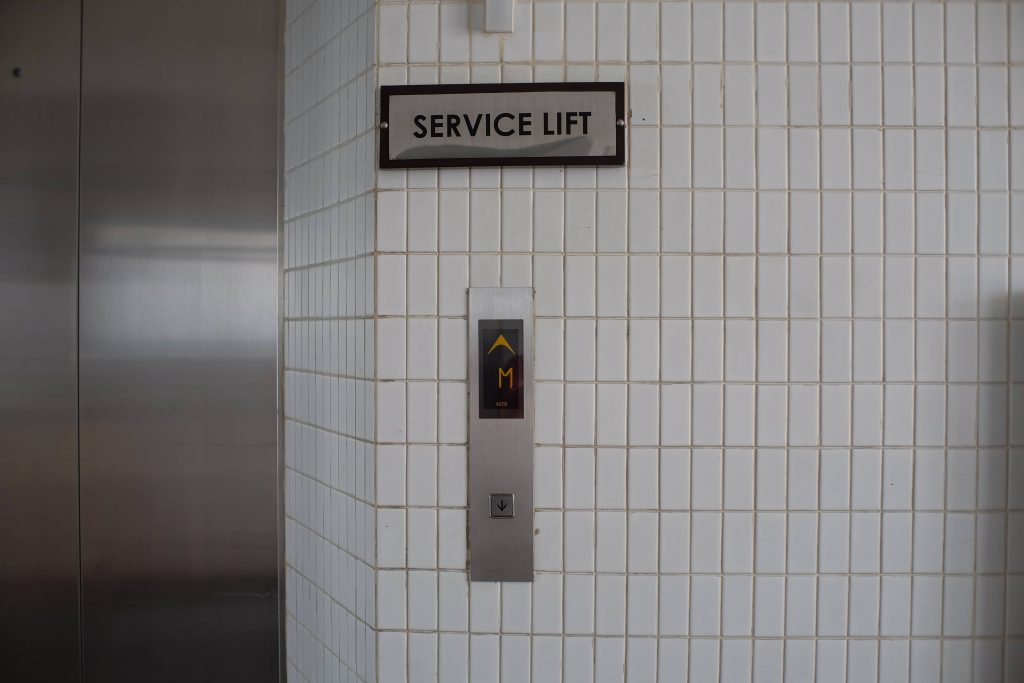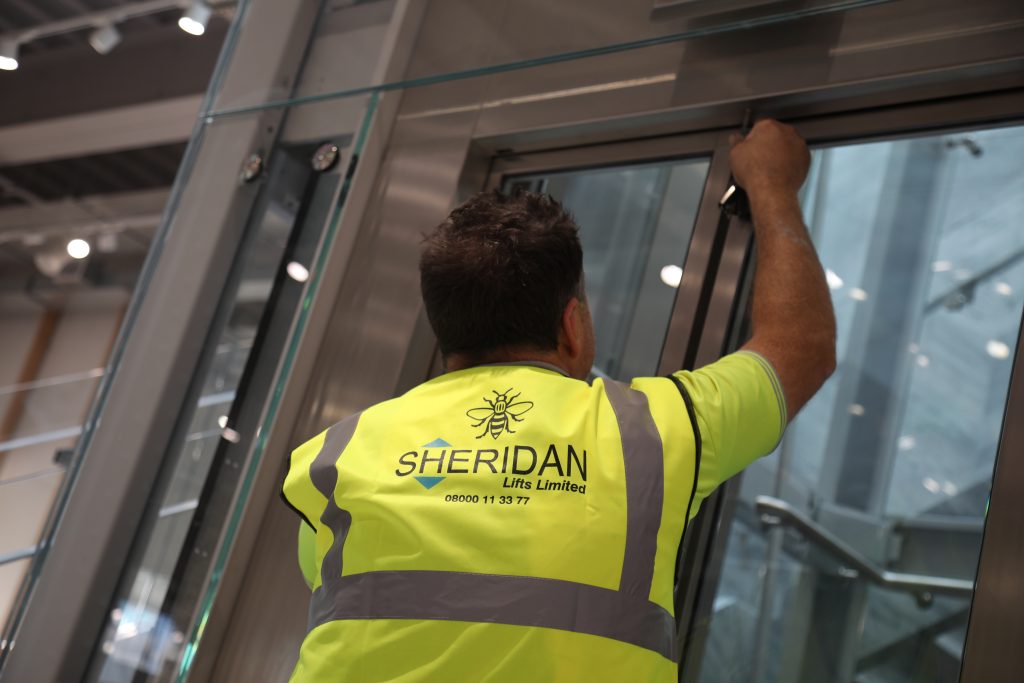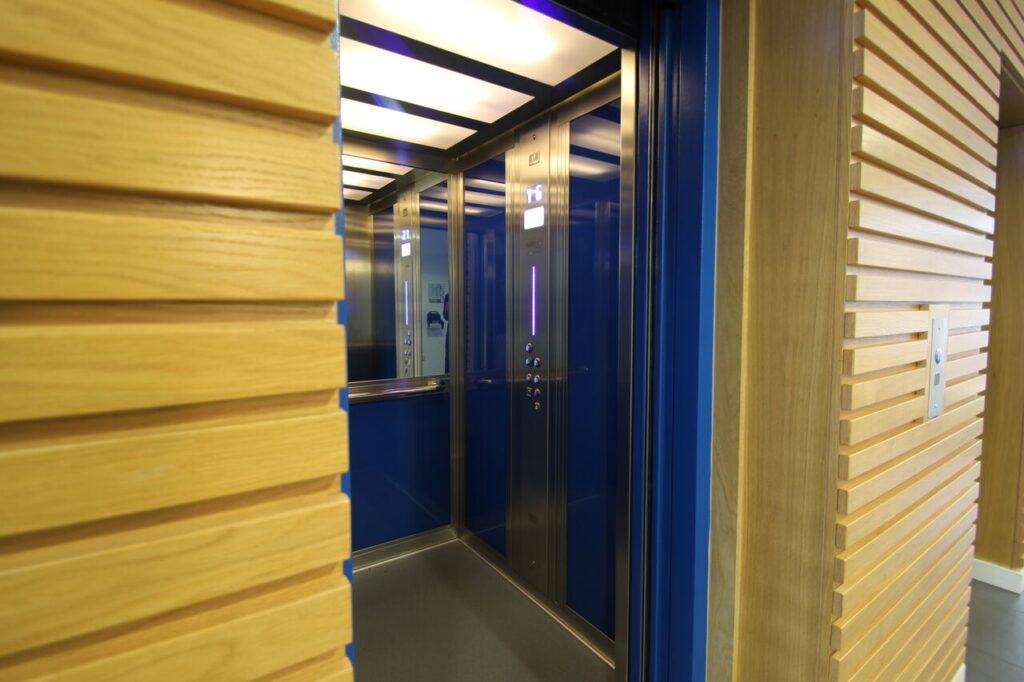It might go without saying that the older the lift, the more prone it is too common lift dangers. With all the working parts involved in the mechanisms, no matter which type of lift you own or operate, it is important to look out for the early warning signs of any lift dangers.
But, don’t worry – the experts here at Sheridan Lifts have compiled this handy guide to explain how long lifts last, the most common lift dangers to look out for, and how regular lift maintenance can help extend the lifespan of your lift.

How Long Does a Lift Last?
A good lift is in service day in and day out. Think of all the people coming and going – sometimes individuals, sometimes families or groups – and then imagine them loaded with additional weight, like shopping bags, backpacks, luggage or prams. Picture this happening several hundred, perhaps even thousands, times per day.
This is the reality of a working lift in a reasonably busy building. A quality lift, like those installed by Sheridan Lifts, will be designed to handle this challenge, but the fact is that every single use of a lift contributes to its wear. External and internal control panels, automatic doors and complex internal mechanisms can and do age, eventually requiring maintenance and servicing.
So how long does a lift last? Well, depending upon several key factors, including lift type and – crucially – quality, you can expect a lift to have a lifespan of between 15 and 25 years.
As a lift nears the end of its working life, you may begin to see problems develop. Buttons may take longer to produce a response, doors might take longer to close, and the lift may take longer to reach its destination. These are relatively minor issues, but as an ageing lift continues to be used, the likelihood of serious problems developing increases significantly.
How Lift Refurbishment Can Extend the Lifespan of Your Lift
Lift refurbishment is an outstanding option when you begin to notice the signs of decline in your lift. In fact, it can even be carried out long before those signs appear, as a precautionary measure to ensure the smooth running of your lift long into the future.
One of the most important outcomes of a lift refurbishment is that the chance of any lift dangers will be dramatically reduced. Refurbishment works by replacing old parts within your ageing lift with new, identical ones. This means that your lift emerges from the process essentially brand new as if it had just come out of the factory for the first time.
Typically, refurbishment can extend the lifespan of your lift by 10 to 15 years, which is preferable to waiting for a serious problem, or even a lift danger, to develop before addressing the issue of an ageing lift.
Refurbishment is also likely to save you money in the long run, as the new lease of life on your lift will reduce the need for costly and unexpected repairs and maintenance in the future.
An additional possibility is to turn the refurbishment process into a lift upgrade. As lift technology develops, individual parts become more efficient, safe and durable. As a consequence, old parts can not only be replaced with identical ones but actually upgraded with new and better ones.
The refurbishment process is a great opportunity to upgrade your lift, and, as experts in the subtleties of this field, Sheridan Lifts will always be able to recommend the best course of action for your lift, offering bespoke plans based on careful inspection and analysis.

The Dangers of Old Lifts
The most common lift dangers with old lifts include the following.
Internal Power Failures
This is something of a nightmare scenario for many lift passengers, due to instinctive fears of dark, confined spaces, as well as years of exposure to television and cinema, which frequently depict a power failure in a lift as something to be dreaded.
In reality, yes, the experience can be disconcerting, but there are protocols to follow which will allow passengers to handle the situation calmly and capably. When power fails, a secondary battery-powered energy supply normally kicks into action, providing light to passengers and activating the emergency contact system.
Nonetheless, this particular lift danger is one that can in many cases be avoided. First, it should be remembered that a power failure is not always due to the lift itself. Perhaps the electricity supply to the whole building has been affected as part of some wider maintenance work. A sudden storm may have cut off power to the surrounding neighbourhood. A simple power cut, like those we often experience in a domestic setting, may be to blame.
While the power failure in itself may not be a sizable problem, and indeed may be resolved fairly quickly, its secondary consequences can be dangerous and undesirable. The lift may stop suddenly as a result of the loss of power, unbalancing those inside and leading to stumbles, falls and potential injury. If the lift is inside your business premises, a power failure could lead to important clients getting stuck – even if the incident lasts for only a few minutes, the negative experience might affect their willingness to do business with you.
Naturally, keeping on top of lift maintenance will reduce the chances of a power failure occurring due to faults within the lift mechanism itself. Since the proper working of your lift is something you can control, it makes sense to ensure that there is as little chance of an internal power failure as possible. Sheridan Lifts makes this process easy by offering a range of expert service and maintenance options, to keep your lift working smoothly throughout its years of service.
Doors Failing to Open
Fortunately, many modern lifts feature sensors which are designed to deal with exactly an obstacle blocking the path of the closing doors. Ideally, these sensors will detect an intervening object, whether a person, a shopping bag, or a briefcase, and prevent the doors from closing, causing them to retract.
A word of warning, however – these sensors are susceptible to failure, just like any other component of the lift’s mechanical system. Time and repeated use can dull their effectiveness, which could lead to serious injury or even death. If a child were to make a rash move out of curiosity, or an adult passenger caught part of their clothing in the door unaware, the consequences could be disastrous.
It is therefore crucially important to ensure that lift doors open and close smoothly and that the sensors that govern their functioning work correctly and are appropriately responsive.
The above problem is one you might encounter at the beginning of a lift’s journey, but keep in mind that a similar issue can develop at the other end. What happens if the doors fail to open once the lift reaches its destination? This is a less dangerous problem, but still, one that could have serious consequences, particularly for those who suffer from some form of claustrophobia.
Contact Sheridan Lifts for a range of bespoke maintenance packages to spot these problems ahead of time and counteract them before they cause any harm.
Sudden Stopping Between Floors
This is the danger of a lift that stops suddenly between floors.
The sudden change in momentum that occurs when a lift suddenly stops between floors, like a heavy bus that suddenly brakes, could throw passengers into the walls, into each other, or in extreme cases into the ceiling. Injuries resulting from this could include sprains, broken limbs, or even concussion if the head is struck.
As we have previously outlined, such a stop could be the result of a power failure, either within the workings of the lift itself or outside it, but it could also be due to a flaw in its programming. Modern lifts are designed to come to a smooth stop at the appropriate floor, but small changes within the lift’s electrical or mechanical systems, or within its programming routine, could throw this motion into disarray.
Normally these small changes develop in response to wear and tear that builds up over time, so the solution is to pre-empt such failures with proper maintenance and servicing from a trusted and experienced provider.
Lift Jerking or Shaking
This particular problem often arises due to a misalignment of physical components within the lift’s mechanism. The motor drive behind the scenes may have been knocked out of alignment after repeated use, resulting in unexpected acceleration or even deceleration. The outcome for the passenger is an inconsistent journey, with jerky bursts of speed unsettling the lift’s movement.
Bearings within the motor can roll loose, increasing friction upon the motor and straining the whole lift system with a less-than-satisfying unsteadiness.
The array of ropes and pulleys that power the lift’s movement can also become misaligned, and this can unbalance the weight of the lift within its shaft, resulting in a shaky trip that any passenger is sure to notice.
These problems cease to be mere inconveniences when they cause distress, discomfort and stumbles for passengers. What is more, a problem like this that goes unchecked is likely to develop into a much bigger one as time passes. Mechanical faults within the lift pose a serious threat to its integrity as a working machine. This is why Sheridan takes the issue of lift refurbishment so seriously, replacing old and worn-out components with factory-new pieces to give them life long into the future.
It is worth remembering that traditional passenger lifts are not the only lifts to suffer from jerking and shaking as repeated use wears down their parts. Take a look at Sheridan’s care options for service lifts, scenic lifts, car lifts and more, or get in touch with us for more details.
Lift Falls
Lift falls certainly add a dramatic touch to many stories, plays and films, but in reality, they are almost an impossibility. A typical passenger lift is supported by a complex series of extremely tough and resilient cables, and in order for a lift plummet to become a possibility, all of those cables would have to snap.
Not only is that highly unlikely in the first place but in addition, modern lifts are designed with emergency backup brakes that would kick into action as soon as the chamber began to fall. At most, the lift would fall for a short distance before the emergency brakes brought it to a halt.
If this were to happen, serious injury could of course result, including sprains, breaks and concussions, as well as the possibility of psychological damage from such an extreme occurrence.
Whilst this scenario is more theoretical than anything else in our guide, it does illustrate the fundamental importance of keeping your lift well looked after at all times. And that is exactly what Sheridan Lifts strives to do every time it installs, maintains or services a lift, whatever its purpose.

The Importance of Regular Lift Maintenance
We have taken quite a trip through the pitfalls of lift dangers, and one recommendation should be ringing in your ears in terms of prevention – the importance of thorough and regular lift maintenance. All of the dangers in this guide, whether big or small, can be identified and forestalled through attentive maintenance. This is where Sheridan Lifts steps in. With our experience across multiple sectors, we know what it takes to keep your lifts in perfect working order around the clock.
Lift Maintenance with Sheridan Lifts
You may have noticed some of the warning signs we discussed in your lift. Perhaps its movements are not as smooth as they once were. Perhaps the doors are not opening or closing when they ought to be. At this stage, it is critical to address these issues before they become full-scale lift dangers and potential threats to someone’s health or well-being.
On the other hand, you may simply feel that, although your lift is running well, enough time has passed to warrant a thorough check of its functions. Given the fact that lifts need regular maintenance in order to continue working safely and smoothly, that would be an eminently sensible idea.
So, how can you arrange for a meticulous inspection of your lift by a trusted team? One that will formulate a bespoke plan to not only restore your lift to perfect working order but also maintain and safeguard its proper functioning for many years to come.
The answer is simple – Sheridan Lifts.
We work across the country, taking care of the whole process of lift maintenance – from initial inspection to regular service and maintenance plans that span the working year.
We will also advise you if your lift needs refurbishment, and can even offer upgrades to specific components to improve its service.
Opting for Sheridan Lifts will give you the peace of mind that your lift – as well as the safety of its passengers – is in the best possible hands.
So, what are you waiting for? Get in touch and get things moving again by speaking to one of our trusted team members today!